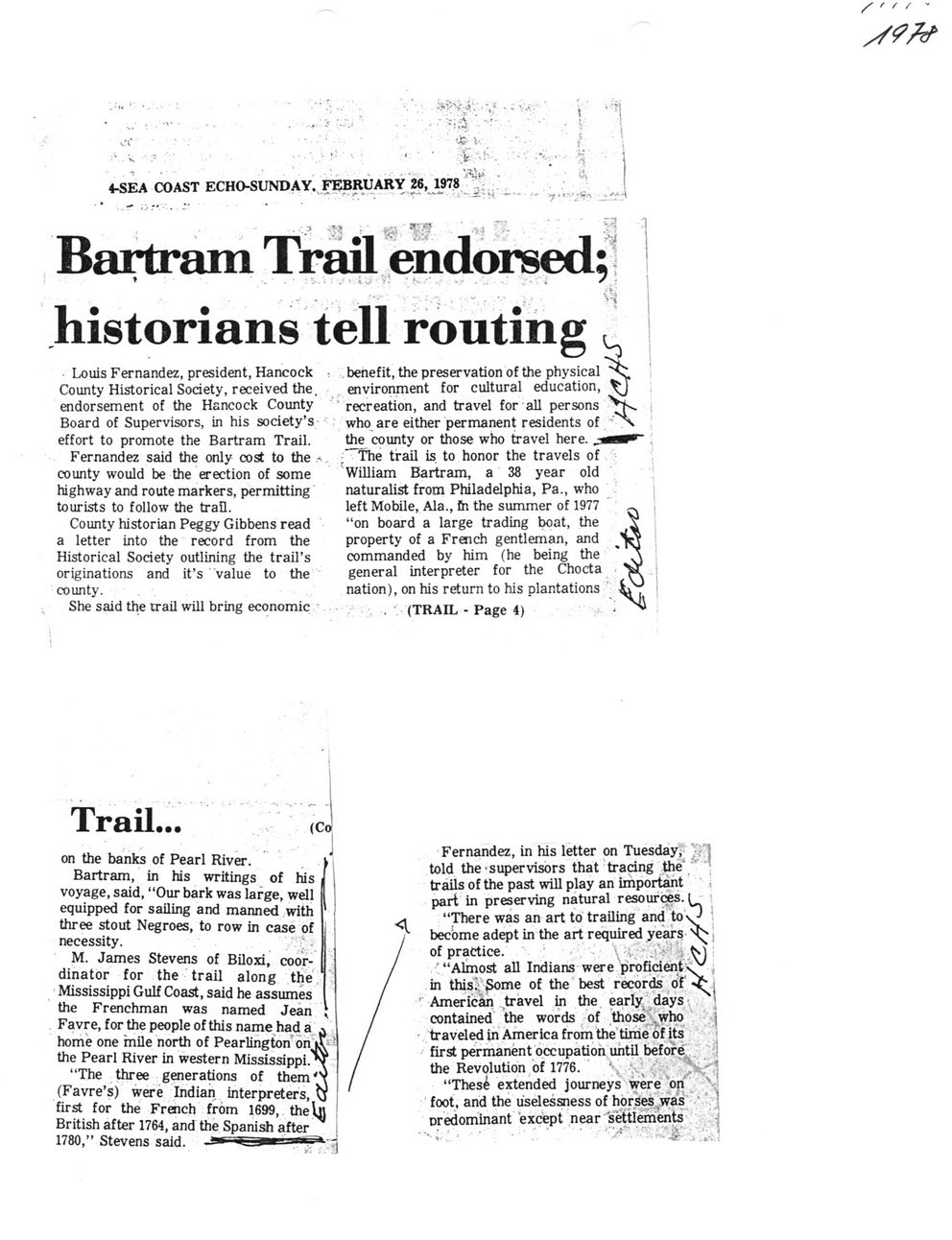This text was obtained via automated optical character recognition.
It has not been edited and may therefore contain several errors.
s r,, -
???? ,; .
?4
?? b.
:$S:.
. V*i>
4-SEA COAST ECHO-SUNDAY, FEBRUARY 26, 1978 . ... ;
r.*' ?-f'* ? ?* S ?*"' " ?'+' jyn-.'rirA
*???
Bartram Trail endorsed; historians tell routing
S3
b
Louis Fernandez, president, Hancock County Historical Society, received the. endorsement of the Hancock County Board of Supervisors, in his society?s effort to promote the Bartram Trail.
Fernandez said the only cost to the -county would be the erection of some highway and route markers, permitting tourists to follow the trail.
County historian Peggy Gibbens read a letter into the record from the Historical Society outlining the trail?s originations and it?s value to the county.
She said the trail will bring economic
benefit, the preservation of the physical environment for cultural education,
? recreation, and travel for all persons who are either permanent residents of a the county or those who travel here.
The trail is to honor the travels of William Bartram, a 38 year old naturalist from Philadelphia, Pa., who left Mobile, Ala., fn the summer of 1977 ?on board a large trading boat, the property of a French gentleman, and ^ commanded by him (he being the general interpreter for the Chocta nation), on his return to his plantations
. (TRAIL - Page 4) ? ^
Trail...
(Co
on the banks of Pearl River.
Bartram, in his writings of his voyage, said, ?Our bark was large, well equipped for sailing and manned with three stout Negroes, to row in case of necessity.
M. James Stevens of Biloxi, coordinator for the trail along the Mississippi Gulf Coast, said he assumes the Frenchman was named Jean Favre, for the people of this name had a home one mile north of Pearling ton'on the Pearl River in western Mississippi.'
?The three generations of them (Favre?s) were Indian interpreters, first for the French from 1699, the British after 1764, and the Spanish after 1780,? Stevens said.
Fernandez, in his letter on Tuesday, told the-supervisors that tracing the"' ' trails of the past will play an important i
part in preserving natural resources, 1
^ ?There was an art to trailing and to \r ?
I become adept in the art required years j
/ of practice. ^
< ?Almost all Indians were profidentvy |
in this? {Some of the best records of ' American travel in the early, days ^ J contained the words (of those traveled in America from the time of its 1 first permanent occupation until beforC,. the Revolution^ 1776.
?Thes^ extended journeys were" on \? foot, and the uselessness of horses was ' , j Dredominant except near settlements .4
? j* ? j;?v]

Bartram Echo-2-26-78